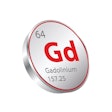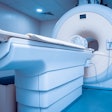How can MRI staff reduce the impact of radiofrequency-induced heating? Are tattoos and implantable medical devices safe? How can quenching be avoided? What are the special risks in 7-tesla MRI? A prize-winning RSNA 2023 exhibit addressed these and other questions.
"While we are familiar with medical safety and ethics principles when errors occur, the culture of blaming parties is still prevalent," noted Ana Paula Santos Lima, MD, assistant professor of radiology at the University of Washington, and colleagues. "Everyone makes mistakes; it's crucial to minimize risks. It's not always direct staff at fault."
System-wide vulnerabilities need to be addressed and coherent MRI safety strategies must be implemented, they added.
 Tattoos are a potential hazard in MRI. Image courtesy of Zsolt Repasy/Alamy Stock Photo.
Tattoos are a potential hazard in MRI. Image courtesy of Zsolt Repasy/Alamy Stock Photo.
To minimize the impact of radiofrequency-induced heating, the authors advised the following:
- Assess all tattoos for metallic ink. Black, red, and cyan may have metallic flecks that can cause injury. Use a heat sink of a sealable plastic storage bag filled with cool water placed on tattoos that are near the area of interest.
- Insulate any intravenous tubing, EEG leads, EKG leads, and pulse oximetry equipment so they don't touch the patient. Make sure no leads form loops. Rapidly changing magnetic fields can induce electrical currents in conductive loops, leading to resistive heating and potential burns.
- Ask patients to wear gowns because personal clothing may contain metallic and conductive materials that are not disclosed in labeling for antibiotic purposes, for example.
- Nonconductive foam padding, towels, an egg crate, or bed linen can be used to insulate the patient's skin and tissues. It is necessary to isolate the patient's body from touching the bore and coils of the MRI scanner (over 1 cm from the bore).
To check if metal workers and welders have metallic foreign bodies in their eyes, initial screening using orbital x-rays is essential, and if a result is positive, consult with an ophthalmologist to assess the risk, the authors recommended.
If a patient's body contains shrapnel and bullets, consider the location, composition, and proximity to the vital structure. "Assess risk versus benefit. MRI may be safely performed on patients with certain nonferromagnetic bullet fragments, identifiable through radiography or CT, without significant risks or image distortions," they wrote.
As part of a risk-benefit analysis, consider clinical necessity and alternatives, and use controlled conditions if proceeding. To ensure safety, use test scans and real-time monitoring and terminate the scan immediately if necessary.
Radiologists must consult experts, review the literature, and assess the ethical considerations, the team continued. Among the potentially MRI-unsafe implantable medical devices are insulin pumps, ventricular assist devices, most tissue expanders for breast reconstruction surgery, Swan-Ganz catheters with thermo-dilution tips, and ferromagnetic or unidentifiable aneurysm clips of the brain.
When it comes to metal projectiles, two potential hazards are the following:
- Scissors in a pocket. "A nurse, monitoring a sedated child undergoing MRI, had scissors in her leg pocket that weren't detected during screening because they were in a lower leg scrub pocket. As she leaned towards the patient near the magnet, the scissors were pulled into the magnet, ultimately getting embedded in the head coil," the authors wrote.
- Toolbox for repairs. "An untrained maintenance worker brought a toolbox into the MRI room. The magnet had to be quenched. Fortunately, no one was injured by the projectile."
MRI quenching
Quenching involves the rapid loss of superconductivity in an MRI unit, resulting in rapid heating of coils and boiling off of liquid hydrogen into the air, and it results in the loss of the magnetic field.
A spontaneous quench is rare and usually occurs without warning, and it causes vibration and loud noise. A manual quench is for life-threatening emergencies, such as a person being pinned against the magnet or an uncontrollable fire in the MRI room. It can take several minutes to disperse a magnetic field, and the refill and power ramp-up takes around two days and costs over $50,000, the group explained.
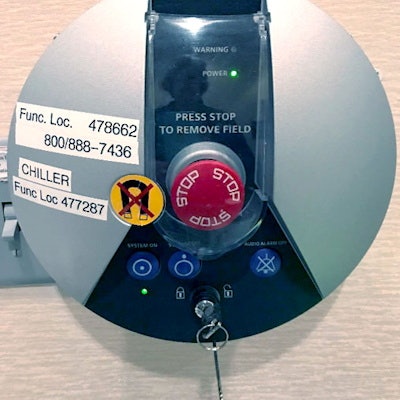 The quench button should still work in cases of power loss and redundancy and automatically self-checks for functionality.
The quench button should still work in cases of power loss and redundancy and automatically self-checks for functionality.
The escape of cryogens during a quench produces a sudden, loud noise that can rupture eardrums, and it might also create a dense white fog that can displace oxygen, creating a high risk of suffocation. The rapid release of extremely cold cryogens can lead to frostbite, especially if direct contact is made.
"The pressure of enriched oxygen post-quench can increase the risk of fire," the researchers stated. "Ensure the magnet room door is propped open to avoid entrapment due to increased pressure."
MRI quenching poses safety risks to patients and staff which can be mitigated through training, protocols, protective equipment, and preventative maintenance, the team added. "Remember the magnet is always on!"
Higher field strength
7-tesla MRI presents distinct safety issues, according to the authors. "There's an increased force on metallic implants and devices, alongside a higher risk for radiofrequency power deposition and heating. Patients are prone to experiencing vertigo, dizziness, false feelings of motion, nausea, nystagmus, magnetophosphenes, and electrogustatory effects at 7 tesla compared with lower field strengths."
At 7 tesla, translational and rotational forces on metallic implants, devices, and foreign bodies are pronounced, and the risks of tissue and implant heating are higher due to shorter RF wavelengths and higher specific absorption rate (SAR).
Patients may experience various bioeffects due to exposure to magnetic fields in 7-tesla MRI. Vestibular apparatus effects like vertigo and dizziness are notably more common at 7 tesla, and peripheral nerve stimulation and acoustic noise bioeffects are other areas of concern, although data on these are sparse, they wrote.
"Slowing down the rate at which patients are moved through the static field gradient may help mitigate symptoms like vertigo and dizziness," the researchers pointed out. "Monitoring RF-related heating in tissue at 7 tesla poses unique challenges due to the lack of a single-channel body RF transmit coil, unlike 1.5- and 3-tesla MRI systems."
Only a fraction of metallic implants and devices are tested at 7 tesla, and 7 tesla-specific guidelines and further testing are needed, they said.
For pregnant patients, use 3 tesla or less, scan in normal SAR modes, and monitor SAR closely. The authors noted that while there can be concern over acoustic damage, the risk is negligible. Pregnant healthcare workers can work in and around the MRI suite, but they should not remain within the scanner bore or in Zone IV during scanning, the researchers concluded.
Editor's note: This exhibit received a certificate of merit award from the RSNA 2023 judges and was submitted in response to the call of Christine Cooky Menias, MD, for a physics educational exhibit on MRI safety. The co-authors were Grace Eliason, University of Colorado Anschutz Medical Campus; Aaron Llanes, University of Arizona, Phoenix; David Pettersson, MD, and Jay Starkey, MD, Oregon Health and Science University; and Shoichi Maeda, PhD, and Eri Ishikawa, Keio University, Japan.


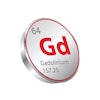
.fFmgij6Hin.png?auto=compress%2Cformat&fit=crop&h=100&q=70&w=100)
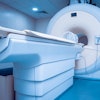


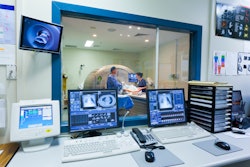
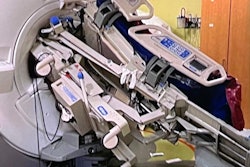
.fFmgij6Hin.png?auto=compress%2Cformat&fit=crop&h=167&q=70&w=250)
